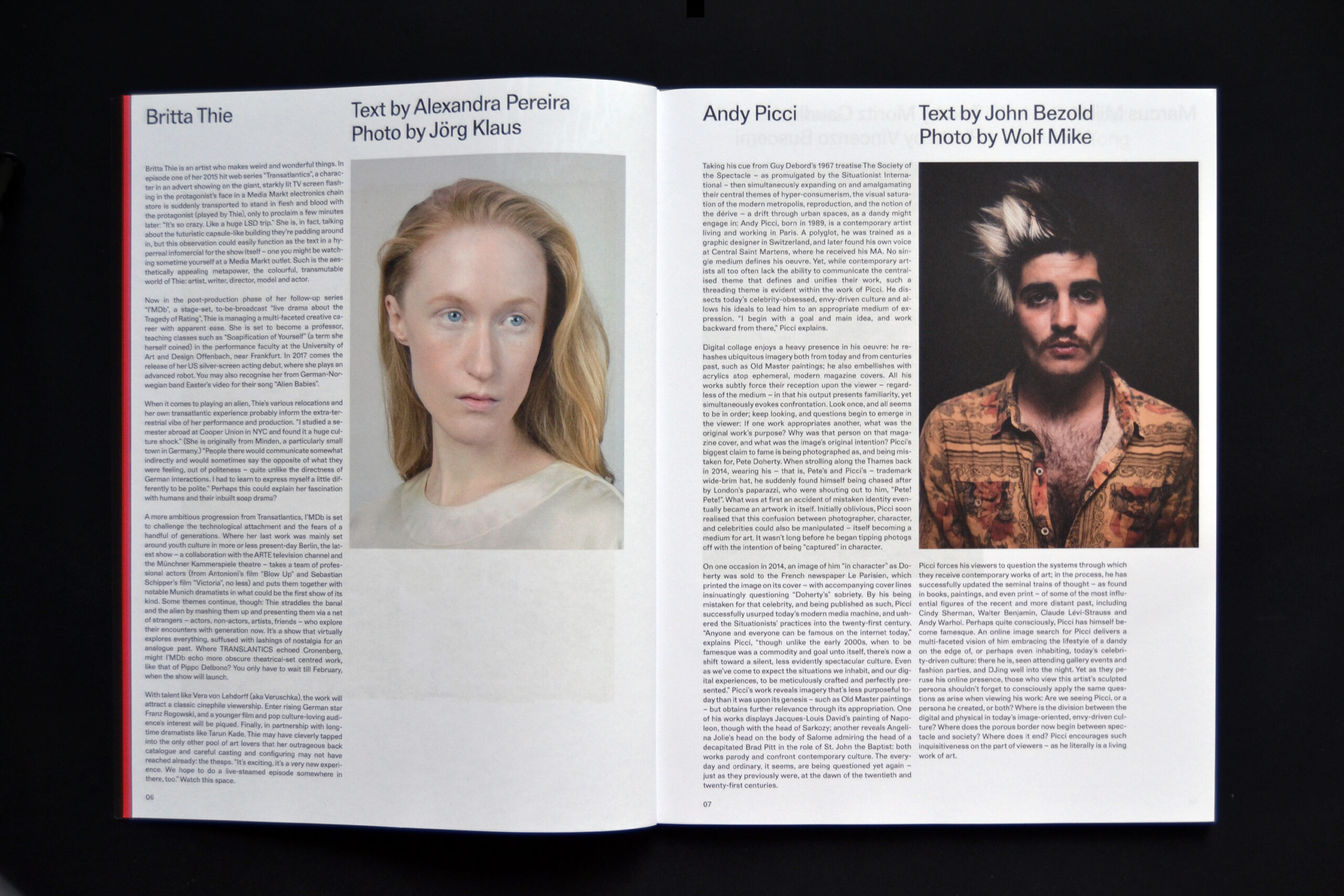Taking cue from Guy Debord’s 1967 treatise The Society of the Spectacle–as promulgated by the Situationsist International–and simultaneously expanding while amalgamating their central themes of hyper-consumerism, the visual saturation of the modern metropolis, reproduction, and notion of the dérive–a drift through urban spaces, as a dandy might do; Andy Picci, born 1989, is a contemporary artist living and working in Paris. A polyglot, he was trained as a graphic designer in Switzerland, and later found his own voice at Central Saint Martens–where he received his MA. No singular medium defines his oeuvre. Yet, while it’s all too often that contemporary artists lack the ability to communicate their own centralized defining theme that unifies their work; such a threading theme is evident within the work of Picci. He dissects today’s celebrity-obsessed, envy-driven culture, and allows his ideals to lead him to an appropriate medium of expression. ‘I begin with a goal and main idea, and work backward from there’, Picci explains.
Digital collage is heavily present within his oeuvre; he rehashes ubiquitous imagery–from today, but also centuries past, as Old Master paintings; he also embellishes with acrylics, atop ephemeral, modern magazine covers. All his works subtly force their reception upon the viewer–regardless of the medium–in that his output presents familiarity, yet simultaneously evokes confrontation. Look once, and all would seem to be in order; keep looking, and questions begin to emerge in the viewer, such as: If a work appropriates another, what was the original work’s purpose? Why was that person on that magazine cover, and what was the original intention of such an image? Picci’s biggest claim to fame, is being photographed as, and being mistaken for, Pete Doherty. When strolling along the Thames, back in 2014, wearing his–that is, Pete and Picci’s–trademark wide-brim hat, he was suddenly being chased after by London’s paparazzi, who were shouting out to him, ‘Pete! Pete!’. What was at first an accident of mistaken identity eventually became an artwork in itself. Initially oblivious, Picci soon realized this confusion between photographer, character, and celebrities could also be manipulated–becoming a medium for art in itself. Soon, he began tipping off such photogs with the intention of being ‘captured’ in character.
On one occasion in 2014, an image of him ‘in character’ as Doherty, was sold to the French newspaper Le Parisien, which printed the image on its cover–with accompanying cover lines insinuatingly questioning ‘Doherty’s’ sobriety. By his being mistaken for that celebrity, and published as so, Picci successfully usurped today’s modern media machine, and ushered the Situationists’ practices into the twenty-first century. ‘Anyone and everyone can be famous on the internet today,’ explains Picci, ‘though unlike the early-2000s, when famesque was a commodity and goal unto itself, there’s now a shift toward a silent, less evidently spectacular culture. Even as we’ve come to expect the situations we inhabit, and our digital experiences, to be meticulously crafted, and perfectly presented.’ Picci’s work reveals imagery that’s less purposeful today, than it was upon its genesis–as Old Master paintings–obtain further relevancy through their appropriation. One such work of his displays Jacques-Louis David’s painting of Napoleon, though with the head of Sarkozy; another reveals Angelina Jolie’s head on the body of Salomme, admiring Brad Pitt’s decapitated head, as in the role of St. John the Baptist; both works parody and confront contemporary culture. The everyday and ordinary, it seems, are being questioned yet again–just as they previously were, at dawn of the twentieth- and twenty-first centuries.
Picci forces his viewers to question the systems through which they receive contemporary works of art, and in the process, he’s successfully updated the seminal trains of thought–as found in books, paintings, and even print–by some of the most influential figures of the recent and more distant past; as Cindy Sherman, Walter Benjamin, Claude Lévi-Strauss, and Andy Warhol. Perhaps quite consciously in the process, Picci has himself become famesque. An online image search for Picci casts a multi-faceted image of him embracing the lifestyle of a dandy on the edge of, perhaps even inhabiting, today’s celebrity-driven culture–there he is, to be seen attending gallery events, fashion parties, and DJ’ing well into the night. Yet the viewers of the sculpted persona of this artist, shouldn’t forget to consciously apply the same questions raised by his work, as they view peruse his online presence. Are we seeing Picci, a persona he created, or both? Where is the division between the digital and physical, in today’s image oriented, envy-driven culture? Where does the porous border now begin, between spectacle and society? Where does it end? He encourages such viewers’ inquisitions–as Picci literally is, a living work of art.
